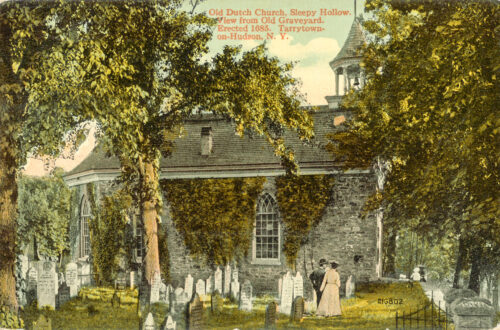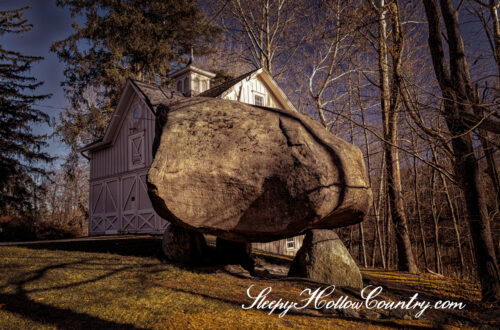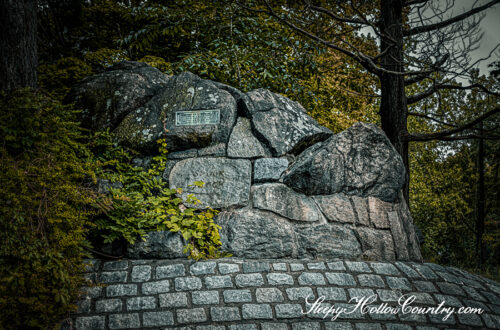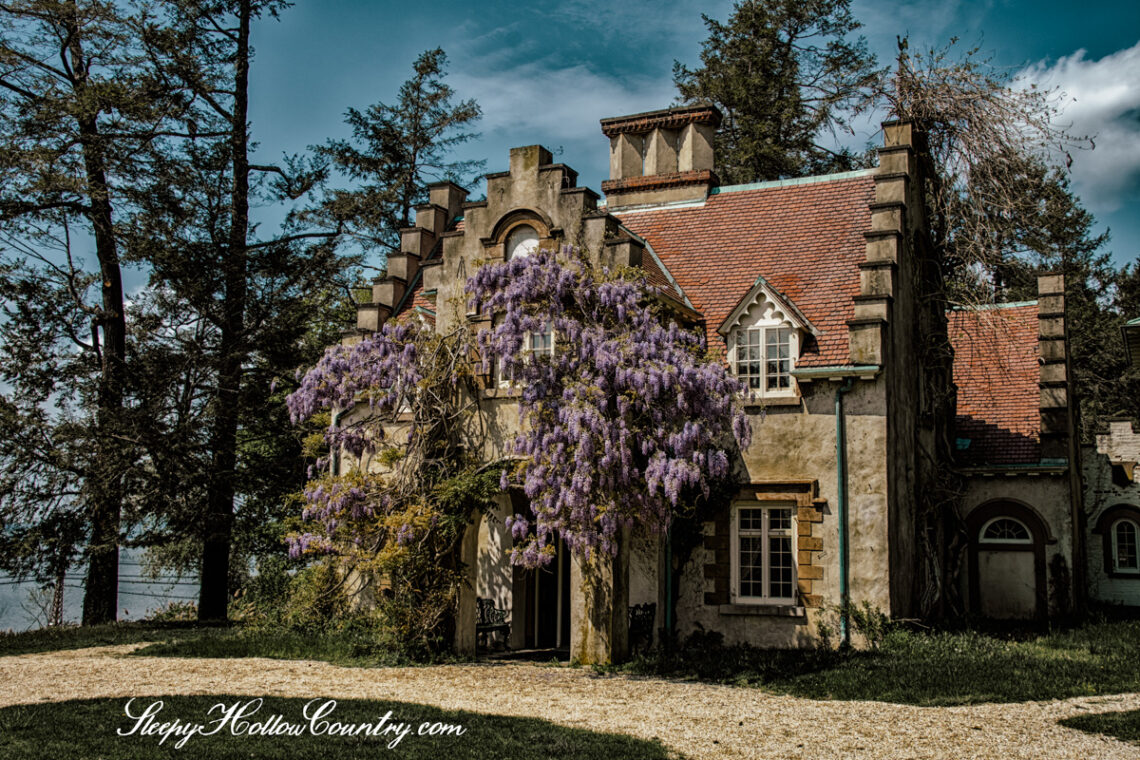
The Man, The Myth, The Legend: Washington Irving. Part 1: A Venturesome Urchin!
The year was 1783. The day was April 3rd. The place was 131 William Street, Manhattan, New York. It was a surreal week for those residing in old Gotham. After eight arduous years of occupation in the city, the British had called a ceasefire, effectively ending the American Revolution. We were no longer the colonies, but the United States. A new republic! There was a collective sigh of relief from the former colonists.

William Irving, Sr. was a Scottish merchant and former petty officer of the British Navy, and his Cornish wife, Sarah Sanders were two of those who were consoled by the end of the hostilities. Right after their marriage, they arrived in New York in 1763 during a “year of great peace”. Although not for long. During the American Revolution, they faced hardship and strife at the hands of the occupying British and saw firsthand the suffering of patriot prisoners. They did all they could to help. The end of the war was rightfully welcome and also just in time, as Sarah gave birth just days later to their last child.
There had been eleven Irvings previously brought into the world, but only eight of them would live to be adults. William, Jr., William Jr., and John, are those poor lost Irvings who did not survive, and William, Ann, Peter, Catherine, Ebenezer, John, and Sarah are those who did. You’ll want to remember their names, they’ll be returning to the story here and there. But this last Irving born after the winning of the War for Independence?
“Washington’s work is ended,” said the mother, “and the child shall be named after him.”
WASHINGTON IRVING.; THE LIFE AND LETTERS OF WASHINGTON IRVING. New York Times, January 16, 1864.
After this fortuitous last birth, the Irving family would move to a larger home across the street at 128 William Street where the youngest Irving would spend most of his youth.
“….they were a merry household, finding diversion in everything ; and though sometimes their frolics partook of mischief, and they were tempted to steal away, as they grew older, to some fascinating, the more so because forbidden, place of amusement, the foundation laid resulted throughout in characters of rare uprightness, combined with a more than ordinary degree of the intellectual and imaginative.”
The Life and Letters of Washington Irving, (1869), pg. 29.
As it would turn out, it was a great idea for William and Sarah to name their last child after the beloved patriot commander-in-chief. In 1789 a small mere six-year-old Washington would meet the Washington.
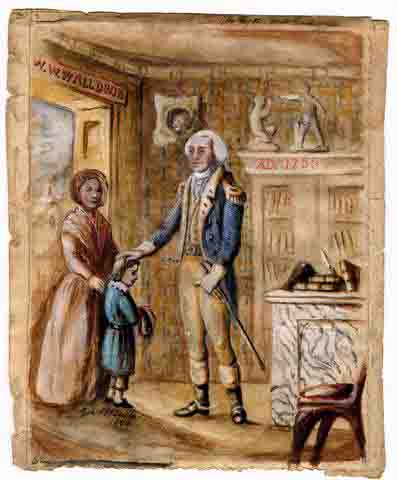
Family lore states that a servant girl named Lizzie was hell-bent on introducing young Irving to his larger-than-life namesake. Through unknown means and knowledge Lizzie had stalked the now-first president and when she knew where he was, found Irving and rushed him into a shop and thrust the young Irving forward and towards the looming George:
” ‘Please your honor,’ said she, ‘here’s a bairn was named after you…” Washington did not disdain the delicate affinity, and placing his hand on the head of her little charge, gave him his blessing.”
The Life and Letters of Washington Irving, (1869), pg. 30.
In later years, Irving affirmed that “I have reason to believe…it has attended me through life.”
As a child, Irving was noted to be gentle, and kind, if not somewhat lazy. He was an avid reader of adventure novels and aspired to Sinbad, Robinson Crusoe, and the lordly knights of Europe. He self-proclaimed himself to being a “venturesome urchin” as pranks and his imagination tended to run wild:
“He would climb to [the] sloping roof [of the Irving home], steal along its dizzy edge to the higher window of the front garret, mount thence to the roof of the adjoining buildings, drop a stone down the chimney, and then clamber back to his hiding place, chuckling over the imagined wonder and perplexity he had created.”
The Life and Letters of Washington Irving, (1869), pg. 28.
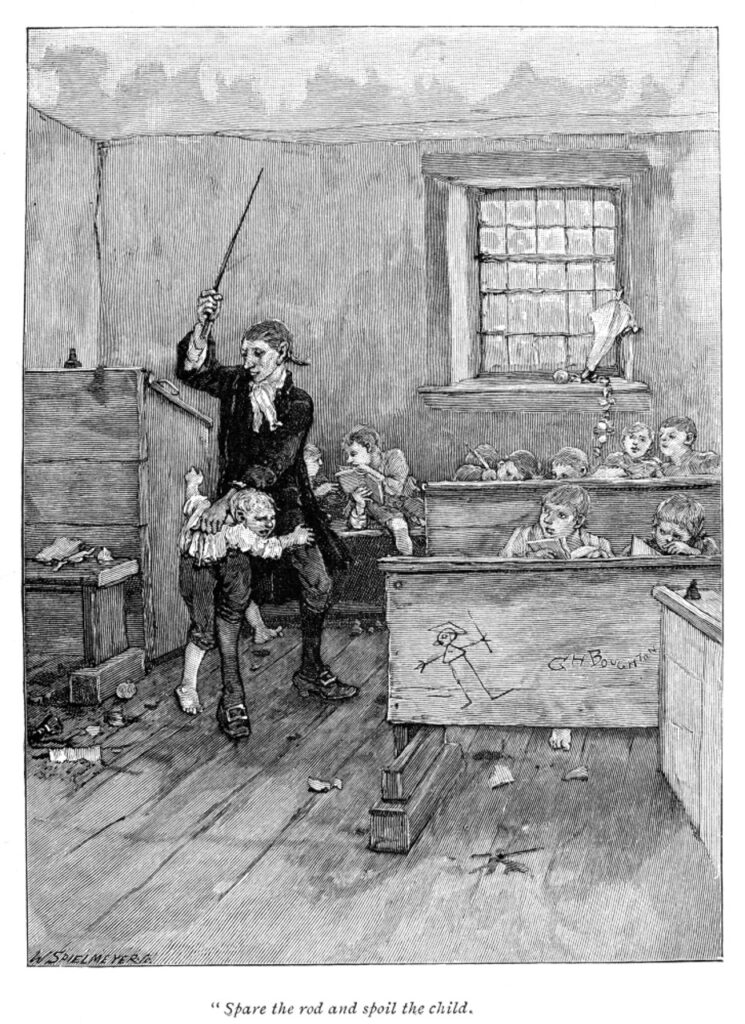
When he wasn’t up to some boyhood trickery, Irving evaded his somewhat strict and pious household to attend plays at a nearby theater and take dancing lessons. He disliked his early years at school and did his best to evade the punishments and discipline of his rough schoolmaster.
Irving’s older brother, William Jr. (the surviving third William, by the way, and seventeen years Washington’s senior) married Julia Paulding in 1793. She hailed from a small community upriver from Manhattan known as Tarrytown. Her family was somewhat well known, locally, as her father’s cousin is the Paulding who apprehended John Andre and his traitorous plot. Kind of a local celebrity, that Paulding.
Her brother William Paulding Jr. would eventually become Mayor of New York City and commission the gothic revival villa Lyndhurst in town in the 1830s. Her other brother, James Kirke Paulding (Four years Irving’s senior, much closer in age) would become Irving’s well-known writer, politician, and close confidant. Drama-infested and humor-invested writing friends to the end Irving and James Kirke were.
Irving moved in with his oldest brother and his wife and fell into comradery with James Kirke Paulding and spent time together in the city reading books, taking in plays, and other amusements. In 1798, an outbreak of Yellow Fever in the city would send both the 15-year-old Irving and the 19-year-old Paulding upriver to Tarrytown and the home of the Pauldings for the adolescents to stay out of harm’s reach.
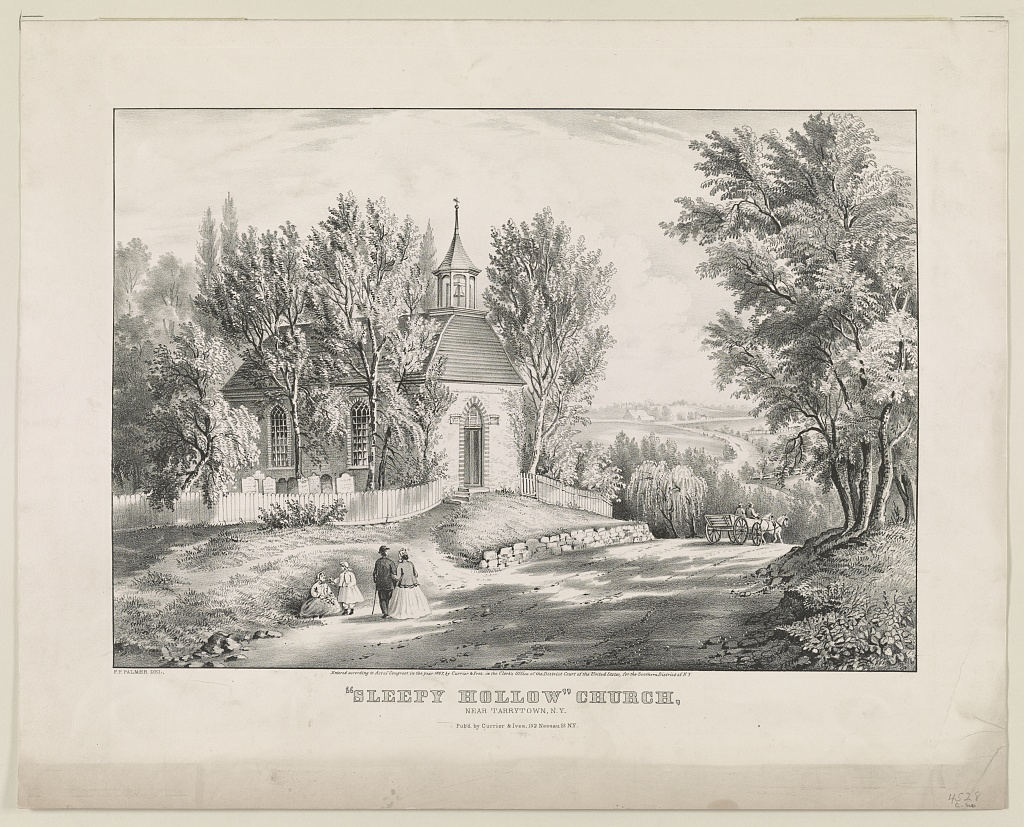
“He had before passed a holiday in Westchester County, during the fever of 1798, and explored the recesses of Sleepy Hollow with his gun, but his migrations had extended no further. The Highlands and all beyond were still, to his eager imagination, a realm of wonder and enchantment.”
The Life and Letters of Washington Irving, (1869), pg. 36-37.
In essence, we can thank that devastating outbreak for introducing Irving to the Hudson River and the magic of Sleepy Hollow Country. This foray into the north would begin a lifelong love of the region, its inhabitants, and its folklore. Irving himself states that:
“I thank God, that I was born on the banks of the Hudson. I fancy I can trace much of what is good and pleasant in my own heterogeneous compound to my early companionship with this glorious river.”
WASHINGTON IRVING.; THE LIFE AND LETTERS OF WASHINGTON IRVING. New York Times, January 16, 1864.
Go forth to Part 2: The Man, The Myth, The Legend: Washington Irving. A Traveling Literary Lawyer.


